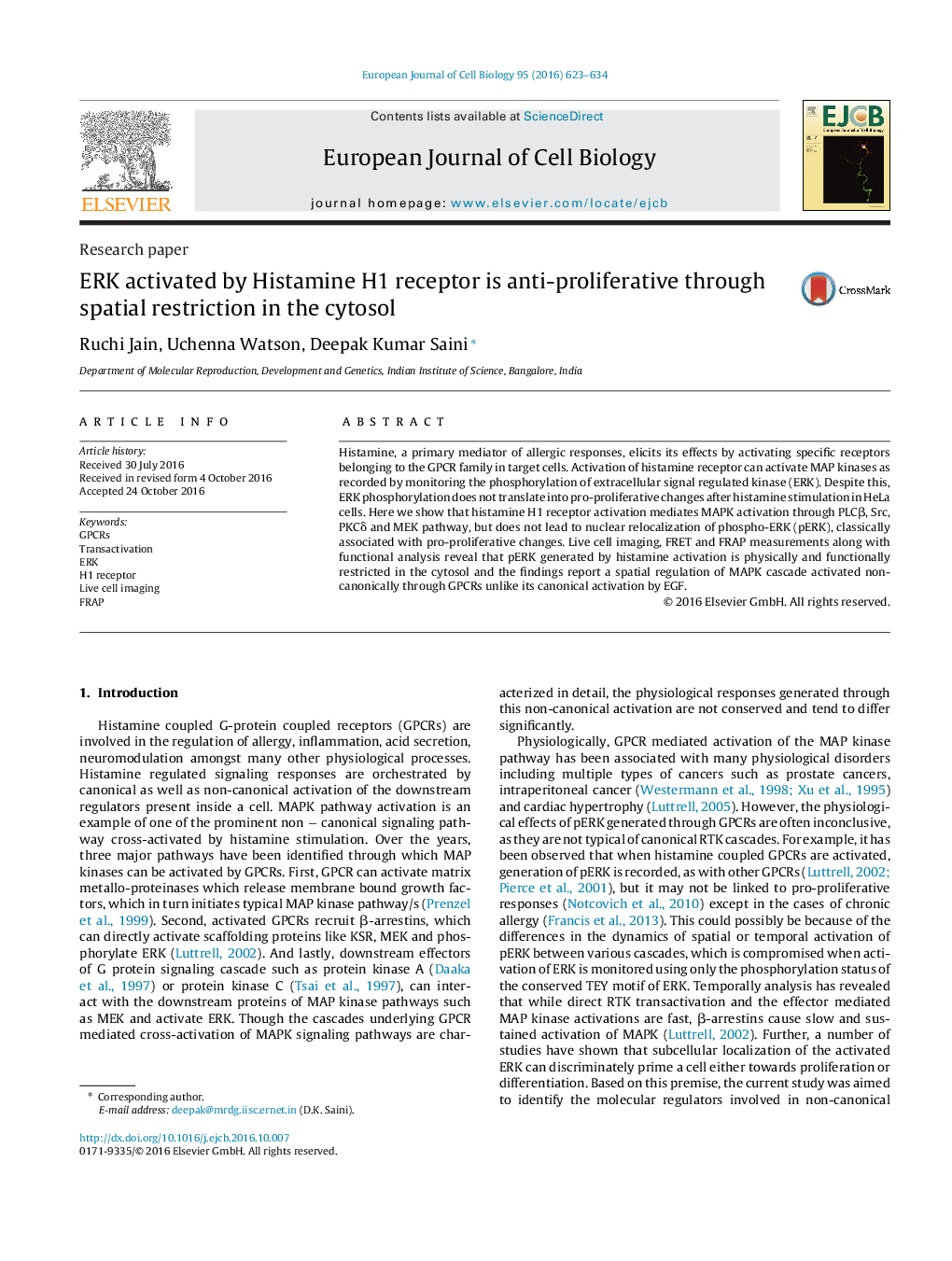| Article ID | Journal | Published Year | Pages | File Type |
|---|---|---|---|---|
| 5532273 | European Journal of Cell Biology | 2016 | 12 Pages |
â¢Histamine H1 receptor activation causes ERK phosphorylation.â¢Phospho-ERK generated through histamine stimulation is restricted in the cytoplasm.â¢Cytosolic pErk does not generate pro-proliferative responses and shows different spatio â temporal dynamics.â¢ROS production post histamine stimulation is through a H1R â â â pERK cascade.
Histamine, a primary mediator of allergic responses, elicits its effects by activating specific receptors belonging to the GPCR family in target cells. Activation of histamine receptor can activate MAP kinases as recorded by monitoring the phosphorylation of extracellular signal regulated kinase (ERK). Despite this, ERK phosphorylation does not translate into pro-proliferative changes after histamine stimulation in HeLa cells. Here we show that histamine H1 receptor activation mediates MAPK activation through PLCβ, Src, PKCδ and MEK pathway, but does not lead to nuclear relocalization of phospho-ERK (pERK), classically associated with pro-proliferative changes. Live cell imaging, FRET and FRAP measurements along with functional analysis reveal that pERK generated by histamine activation is physically and functionally restricted in the cytosol and the findings report a spatial regulation of MAPK cascade activated non-canonically through GPCRs unlike its canonical activation by EGF.
Graphical abstractDownload full-size image
